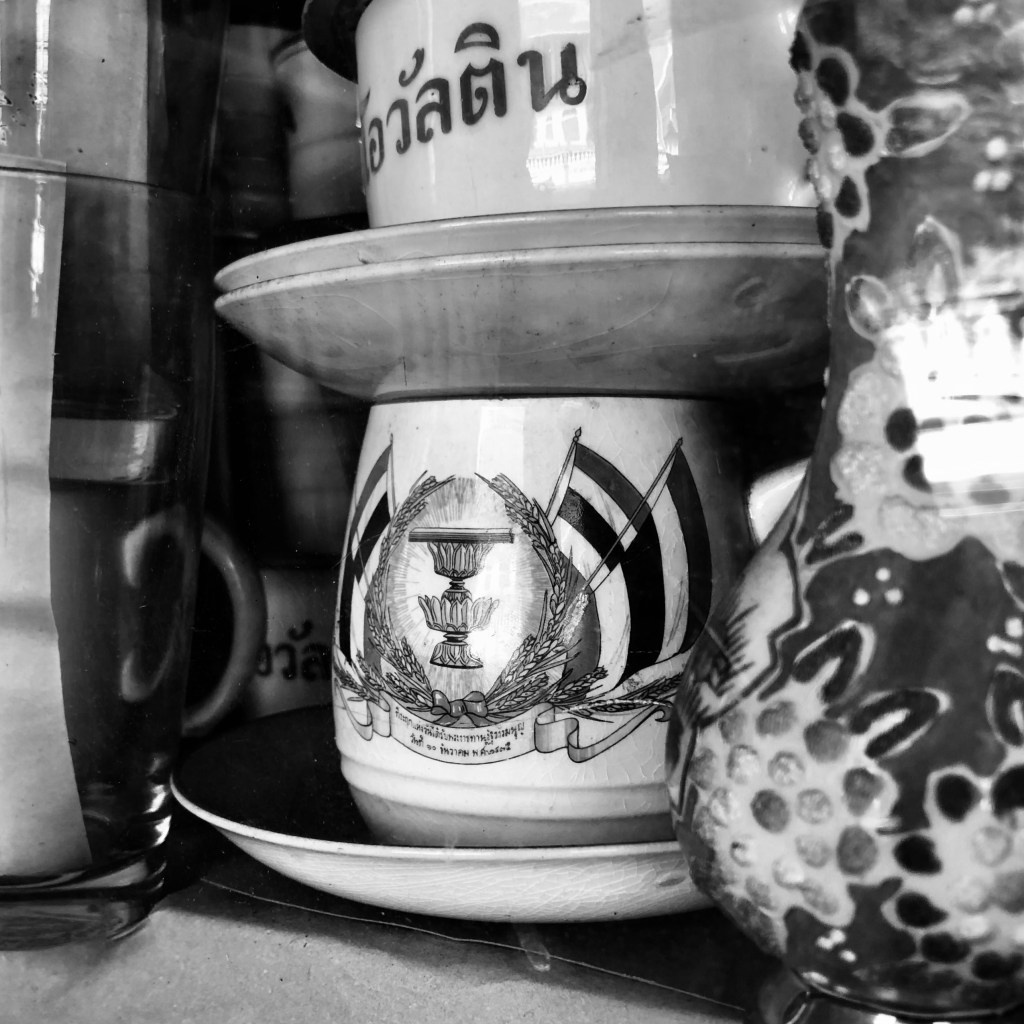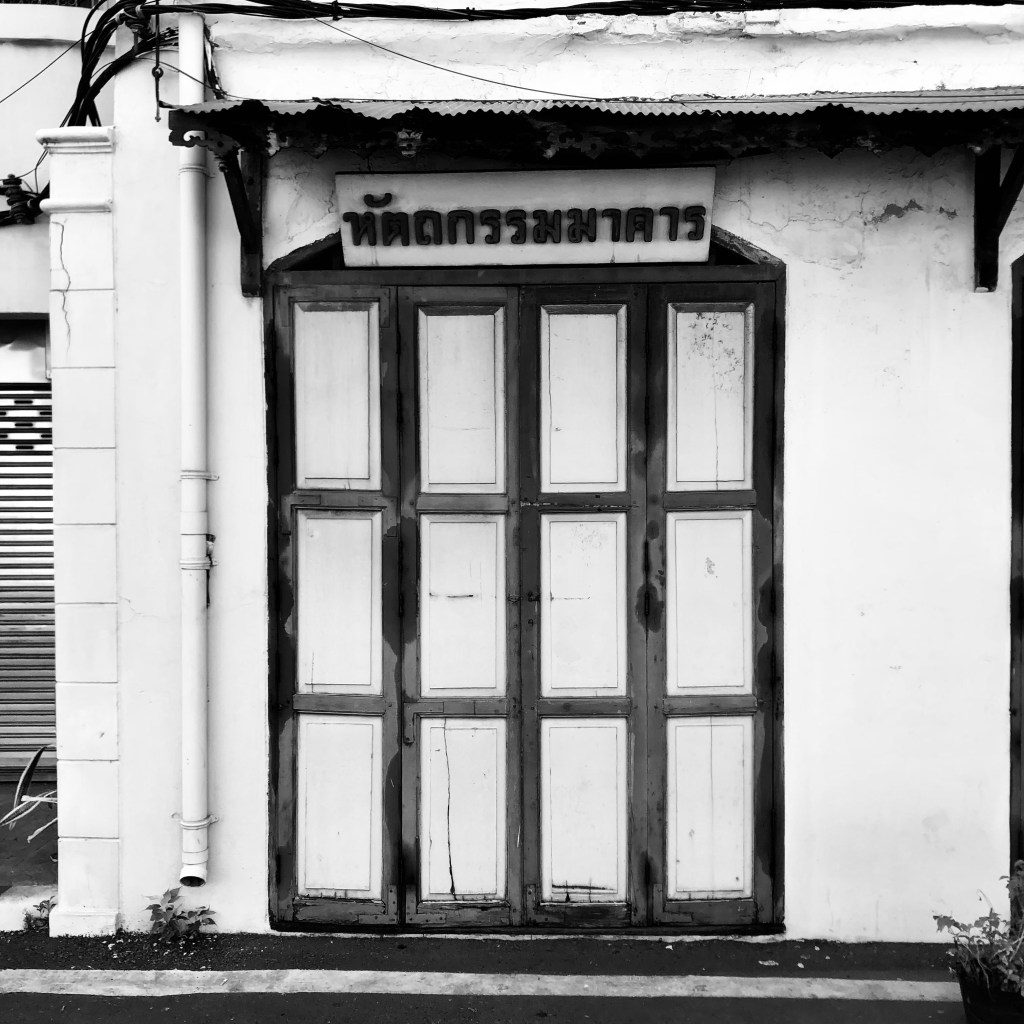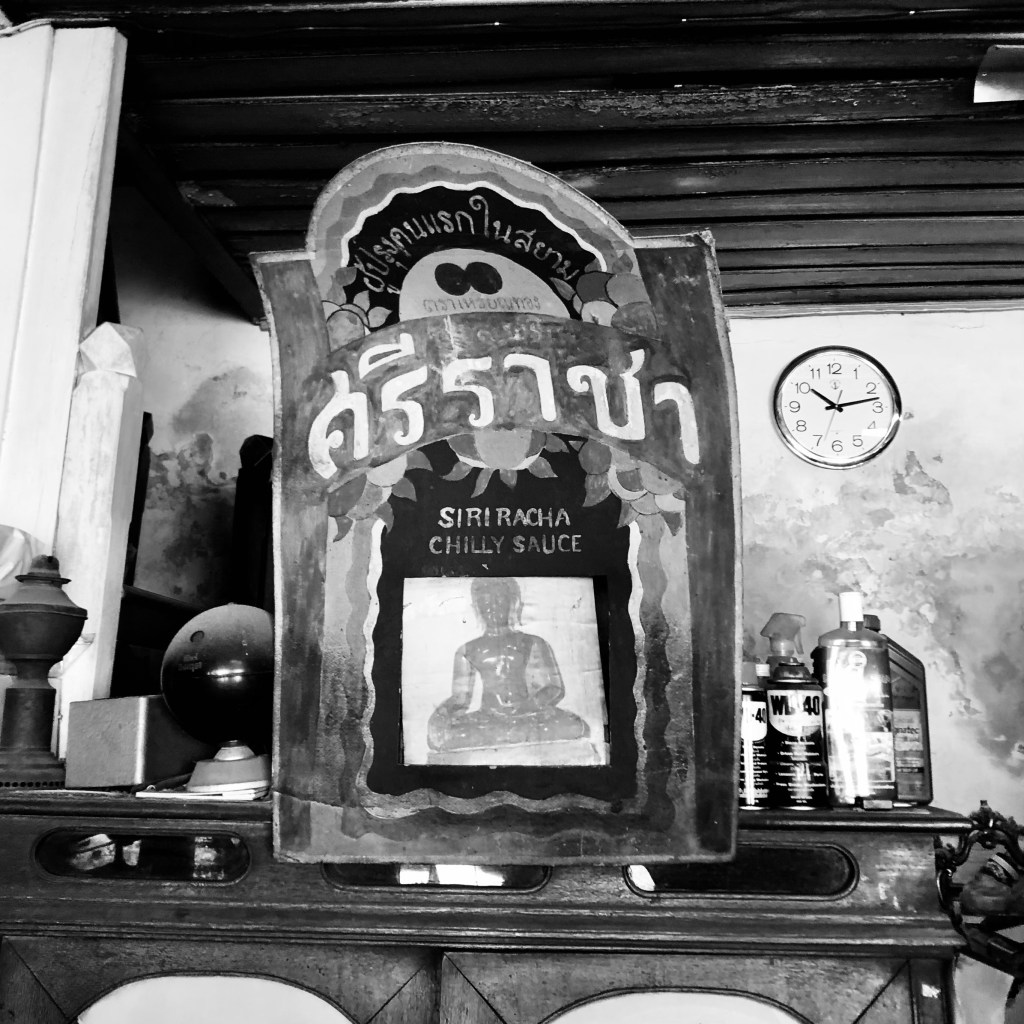Who doesn’t like a good origin story? We all want to say we know ‘the real story’ behind something. Well let me tell you a Bangkok foodie tale about sriracha sauce, one you’ll be using to spice up dinner party conversations for years to come.
In June 2012 the publishers of Oxford English Dictionary (OED) quietly included sriracha in their quarterly update of new words. Now unless you’re a logophile, you may not have noticed two things from the previous sentence. Firstly, that OED even has a quarterly update. Secondly, that sriracha is one of less than a dozen words of Thai origins to be included as a loanword — a word adopted from a foreign language with little or no modification. By comparison, there are 540 Japanese loanwords currently in the OED. It may also come as a surprise to you that sriracha was also the very first Thai loanword related to food — Pad Thai was not added until 2022. Of course to Thais, Sriracha (capitalised) is also a coastal town and subdistrict in Chonburi province, which is generally acknowledged as the point of origin for this now globally famous hot sauce — traced back to the family of one man Khun (Mr.) Gimsua Timkrachang. What is less known perhaps, is that one of K. Gimsua’s daughters would bring her father’s recipe with her upon moving to Bangkok in 1932, where she would go on to win numerous gold medals for this now iconic family recipe. To this day, this very same sauce continues to be made, bottled and labelled by hand by the grandson of K. Gimsua, whom I met one morning in his 150 year old shopfront in Bangkok’s old town. A family legacy that for over 90 years has been the Bangkok story of Sriracha.
Families are complicated. You’ll be glad I wrote down the twists and turns of this one.
Khun Gimsua came from a large and prominent Thai-Chinese Sriracha family with five siblings and in turn had his own sizeable household: no less than five children between two wives — therein sowing the seeds that would grow to become the tangled roots of a family saga worthy of an Amy Tan novel, one family story that became many family stories, akin to one of Thailand’s most famous novels Four Reigns — with characters such as first wife, second wife, and even a marriage of first cousins, including one who married a cousin who had also been previously married another first cousin. All these family members had been given the same recipe by K. Gimsua — one recipe that would launch a thousand sauces. In one of the greatest and most convoluted stories of family entrepreneurship, one son (K. Sakol Timkrachang) from his second wife (K. Sangiem) would eventually found two sriracha brands: Grand Mountain and Three Mountains. A niece of Gimsua, K. Tanom, the daughter of his brother (K. Akorn) would marry his nephew, K. Damrong Chakkaphan who was the son of his sister (K. Yen), she would go on to found Sriracha Panich, which is most often cited as ‘the original’ sriracha sauce brand. Sriracha Panich was in fact originally called Golden Mountain, in honour of K. Gimsua himself, because Gimsua in one Chinese dialect means Golden Mountain. However, 1984 K. Tanom’s family sold their business to Thai Theparos PLC, the country’s largest maker of sauces, whose original seasoning sauce brand confusingly was also called and trademarked as Golden Mountain, hence the subsequent trademarking of Sriracha Panich — Sriracha, as a word on its own, cannot be trademarked in Thailand because it is the name of a province. Lastly, another daughter of K. Gimsua, K. Laor also from his second wife (K. Sangiem) would go on to marry K. Uthai Suwanprasop, moving to Bangkok and founding Gold Medals sriracha sauce. It is her son, K. Lakud Suwanprasop who is the only descendant of K. Gimsua, who continues to make the family recipe by hand in small batches — his family’s sauce has never been industrialised, ensuring that it remains as close an approximation to the way the sauce was originally made.
To enter into his humble shopfront, located on Fueang Nakorn Road, across the street from Rachabopit Temple, is to cross a threshold in time, where flavour and history are all bottled together and mixed with a heady dose of culinary lore in a sriracha sauce that has been made in the same location in Bangkok since 1932, which ironically makes it the oldest registered brand of any of the country’s sriracha sauces.





“We’re the first.” K. Lakud makes a point of telling me, referring to 1932, which is written in the Thai calendar year of 2475, proudly emblazoned on all his bottles.
“We’re actually all cousins, you know.” K. Lakud explains, while sitting calmly in a wooden chair, surrounded by a century’s worth of memorabilia.
All of his mother’s siblings new the recipe well because they were all involved in helping their father, K. Gimsua to make and sell the sauce out of the family home in Sriracha. This was long before the days of branding, or product registration.
One particularly historic piece of his family history sits atop a back cabinet. The original large scale brand signage — rusting from age and bent from years of usage — from which the current label is derived from, dating back to 1932. It is hand painted and has a couple of quaint details, such as the English misspelling of “Siriracha” and “Chilly” sauce. There is also an image of the Emerald Buddha painted on, identifying the nation’s most holy religious statue, famously housed in Bangkok.
He tells me that his father met his mother while he was working in Sriracha and after they got married, they moved to Bangkok because his father’s family owned this shophouse. He was born in Bangkok five years after his parents settled here — now 86, K. Lakud adds that he was his parents’ third child.
“We’re the only original shophouse owners left on this stretch of Fueang Nakorn Road, which was cut during the construction of Rachabopit Temple in the reign of King Chulalongkorn.” My grandfather new of the construction plans ahead of time and was one of the first to buy a plot.”
“When my mother moved to Bangkok she brought her stone mill with her and started making the family sauce, which was already famous in Sriracha, to sell to people in the city. Everyone loved it and her friends encouraged her to enter it in one of the competitions in the newly inaugurated Constitution Fair.” Khun Lakud explains further that at the time, Thailand had only recently become a constitutional monarchy in 1932 and it quickly became a tradition to mark the anniversary with a fair where there were lots of booths selling food as well as competitions where awards were given for outstanding products. K. Lakud’s mother would go on to win many gold medals for her sauce.
“That’s why our brand is called Gold Medals. We still make it just like my mother did. It’s not done in a factory, if you taste it, you’ll know. It’s still homemade, so it tastes stronger. You feel the texture of the ingredients. You have to shake the bottle.” K. Lakud emphasises.
Sure enough, the vintage label still retains the design elements, the colours and the hand drawn illustrations from the 1930s. The date of production and recommended expiration date are still hand stamped by K. Lakud himself each time a batch is finished.
“I cut and put the labels on,” he says proudly. Images of the front and back detailing of numerous gold medals are incorporated into the bottle’s label design, along with an illustration of the Thai Constitution. Perhaps the most personal detail that most people don’t notice is a line in vintage Thai typeface that reads, “Recipe of Laor Suwanprasop”, just above the FDA code number.
“That’s my mother.” K. Lakud says proudly.
Of all the sriracha sauces I have ever seen, this is the only one that has a person’s name on it — the daughter of K. Gimsua, whose name has been on these labels since 1932.
“You know, most people never ask who she was. They just know she came from a family in Sriracha.”
K. Lakud points to a blue wood and glass cabinet, where commemorative pitchers and other crockery, long since tinted with signs of age and usage, bearing illustrations of Thailand’s Constitution on them. “You see, in the early years, the fair’s organisers would come out with a collectable item — a different style each year. Sometimes the items would be sponsored by famous brands like Ovaltine or Nestle. So we would collect them. We didn’t buy them you know. All those dozens and dozens of old dishes, we didn’t buy them. We would save labels from the powdered milk tins and exchange them for these.”



I wonder whether K. Lakud is aware of the scale of fascination that his family’s recipe has attracted all around the world. Does he realise how much the origin story of sriracha sauce has been is so hotly debated? In his world, sitting there in his shop, it doesn’t seem to matter much. He knows that over the years many of his distant relatives have started siraracha sauce brands.
“We just sell what we make. Each batch we only make 600 litres. We sell out most months. We’ve always kept our business small, our family does other things too. We wanted to keep the sauce homemade in scale.”
K. Lakud and his son K. Salakchin now help each other with the sauce business. It is apparent that the business keeps going largely to keep K. Lakud busy, while his son handles other family business. There is hope that the legacy of Gold Medals sauce will continue with K. Lakud’s grandson, but they are not sure if that’s what the next generation wants to carryon. “He’ll have to decide on his own.” K. Lakud says, referring to his grandson.
I ask him do people realise that all four of Thailand’s most famous sriracha brands are related family wise? He smiles and says that “it’s no secret.”
“We know we’re all related. Most people don’t think to ask.” He says with a smile.
“We have two flavour strengths you know. Mild, is made from Prik Chee Fah (Spur Chilli). Strong, is made from Prik Kee Noo (Bird’s Eye Chilli).” As he points to a heavily weathered wooden display cabinet, its peeling paint in sharp contrast to the rows of shiny new bottles filled with the deeply brilliant red-orange elixir that leaves little doubt as to the punchy flavours that are contained within. A potent and highly addictive combination of only five key ingredients: fermented chillis, garlic, vinegar, sugar and salt. So few elements for such a potent culinary flavour bomb. A sauce that has been doused and dappled on millions of dishes around the world, inspiring fanatical foodies of all ages.
I sat there with K. Lakud for quite some time that first morning I met him. He likes visitors, he always encourages people to sit and chat — there is often a steady stream of customers walking by, picking up several bottles at a time. Some first time customers seem almost surprised that anything is sold out of K. Lakud’s shopfront at all because it is mostly full of eclectic, heavily used and seemingly random items, connected only by time. It is by any account, a well-worn space. Gold Medals sauce, in Mild and Strong, are the only two items for sale. No one seems to buy only one. K. Lakud seems to genuinely enjoy people stopping by and he is very comfortable telling his story to whomever wants to take the time to listen.
I was glad to take my time and listen.
K. Lakud has many repeat customers, some who do order bulk and likely sell his sauce onwards to other people, but other than that he says, “We only sell out of this one shopfront. I don’t want to bother selling through other outlets, the delay in payment for consignment is not worth it for me. Smaller business, less problems.” He says, adding “besides, people seem to like coming back to buy directly here. They feel special coming to buy from me.”
I am one of those people.
One more thing about K. Lakud, he is not camera shy. When I recently asked him if I could take a photo of him and the sauce bottles on the shelf for this story, he proudly positioned himself on a chair right in front of the sauce display. “This will be a good photo,” he says, looking straight into the camera — in his characteristically soft spoken, yet quietly patrician manner. I never took any photos of him before because I usually got caught up in chatting with K. Lakud.
In the shadeless intensity of a typical Bangkok day, against the glittering tiled spire and the curved beauty of the temple colonnade across the street, it is all too easy to walk by K. Lakud’s historic family shopfront. Its faded cream paint with dark green trim almost wanting to go unnoticed. Many people indeed, do not notice. They do not know the quiet life that carries on one of the greatest culinary legacies this country has, which has for the past 90 years been a story rooted in Bangkok.
The real secret to K. Lakud’s sauce, and that of his mother’s sauce, and that of his grandfather’s and that of all of his distant cousins, is that the sauce has never been a secret. K. Gimsua loved and shared the recipe freely and his gift of this singular culinary heritage went on to create prosperity for many of his descendants, flavouring powerful food memories of just about every Thai person who has ever had a crispy golden Thai fried omelette served over fragrant, steaming jasmine rice, accompanied by sriracha sauce — a sauce that stirs emotions.
Right above the doorway of K. Lakud’s shopfront is a sign that looks about as old as the shophouse, written in Thai: “Hattakamamakarn” (หัตถกรรมมาคาร). It had never occurred to me to ask him what that name meant until the other day. He tells me it’s the name of the family business.
“It means House of Handmade.”

Hattakamamakarn (หัตถกรรมมาคาร)
109 Fueang Nakhon Rd, Wang Burapha Phirom, Phra Nakhon, Bangkok 10200, Thailand
The shop is open Mondays through Fridays from 9am to 4pm. On Saturdays from 9am to midday. Closed Sundays and Public Holidays. Only one product is sold: Gold Medals Sriracha Sauce, in two strengths – Mild and Strong.
Three sizes are available.
Small, THB 20
Medium, THB 25
Large, THB 50
Products are not sold online.
A special thank you to Major General Saowanit Trikityanukul (Chakkaphan), the granddaughter of K. Tanom Chakkaphan, the founder of Sriracha Panich, for the detailed family tree of the Timkrachang family and descendants. This family tree is on display at the Group Student Center in Sriracha Province where there is information on several of Sriracha’s prominent families and history.
8 responses to “Secret Sauce: Sriracha, a Bangkok Story”
-
Na, I love your stories. Your humour and details are wonderful. Please never stop writing!
LikeLike
-
Thank you so much Nancy. So thrilled you enjoy reading my stories. Your encouragement means a great deal to me.
LikeLike
-
-
-
Thanks for the mention 🤓👍🏻. I enjoyed reading your article too.
LikeLike
-
-
[…] sleep together on the second floor of this tiny shophouse, ended up in Bangkok is very ably covered here. But if you are too lazy to click onto the link, basically different branches of the family ended up […]
LikeLike
-
[…] on the second flooring of this tiny shophouse, ended up in Bangkok may be very ably lined right here. However if you’re too lazy to click on onto the hyperlink, mainly totally different branches […]
LikeLike

Leave a comment